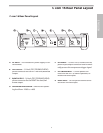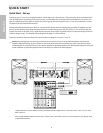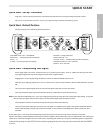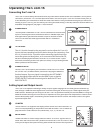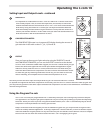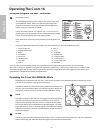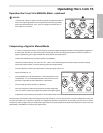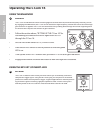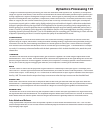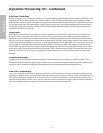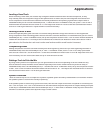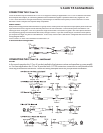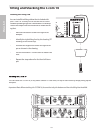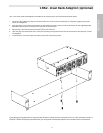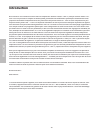
ENGLISH
13
Dynamics Processing 101
To begin to understand dynamics processing, we must first understand what dynamics are. Dynamics, or the dynamic
range of a signal or audio device, is the amount of level between the softest and loudest possible output. Dynamics pro-
cessing is applied to a signal to manage the changes in level. Various types of processing units are available to control
dynamics including Noise Gates, Expanders, Compressors, Limiters and De-Essers. All of these processes have a unique
effect on a signal, but one common element they share is that in one way or another they control gain. Some dynam-
ics processors control gain in a subtle way by slightly reducing how soft and loud a signal is, while others make drastic
changes in gain like reducing the signal until it’s off. Applications for dynamics processing can be categorized by two
distinct groups; first, to treat a signal that has an unpredictable dynamic range and make it predictable, and second, to
create a "sound" by squeezing out the dynamic range. Whether used for a live sound application, recording, mixing or
mastering, dynamic processors like the C Com 16 are valuable tools for controlling gain. The following is a basic overview
of dynamics processing and how it is used to improve the quality of recorded and live sound.
COMPRESSOR
A good compressor is one of the most useful tools in live sound and recording. Compressors are used to control the
dynamic range of a signal, which offers a variety of benefits including leveling a signal that’s being recorded, having an
instrument sit in the mix, and increasing the loudness of a sound system to name a few. Drastic amounts of compres-
sion will also result in an effect that becomes more of a sound than just controlling gain. To understand how a compres-
sor works, it is necessary to become familiar with the basic parameters which include threshold, ratio, attack time, and
release time.
Threshold
Threshold is the level that once the signal exceeds, gain reduction is applied. The normal range of adjustment for the
threshold level is –40 to +20 dBu. If the threshold level is set above the highest level of the signal being sent to the com-
pressors, the gain reduction is never triggered. Therefore, the compressor is virtually by-passed. If the threshold level is
set very low so that any signal will trigger gain reduction, the compressor is working as an automatic leveler.
Ratio
The ratio control is used to set the proportion of gain reduction in relationship to the input signal. For example, if the
ratio is set to 2:1 and the signal crosses above the threshold level, an increase in level of 2 dB will produce a 1 dB increase
in level at the output. A ratio setting of ∞ to 1 means that an infinite amount of input signal is needed to raise the output
level by 1 dB. This means that the output level stays constant even when the input crosses over the threshold level.
Attack Time
Attack time is the amount of time that a compressor takes to affect the gain reduction after the signal rises above the
threshold level. A well-designed compressor has adjustable attack times ranging from 300 µs (microseconds) to 300 ms
(milliseconds). A good compressor will sound smooth as it begins to control the gain regardless of the attack time.
Release Time
The release time is set to control how long the compressor takes to return the input signal back to its original level once
the signal falls below the threshold level. The acceptable range for release time is from 50ms to 5 seconds. In normal use,
faster release times are used for spoken word and longer release times are generally better for instrumental music.
Auto Attack and Release
Today, sophisticated compressors often incorporate a dynamic or Auto Attack and Release mode. The C Com 16’s AEG
(Auto Envelope Generator) is such a mode which automatically adjusts the attack and release time based on the dynami-
cally changing input signal.



